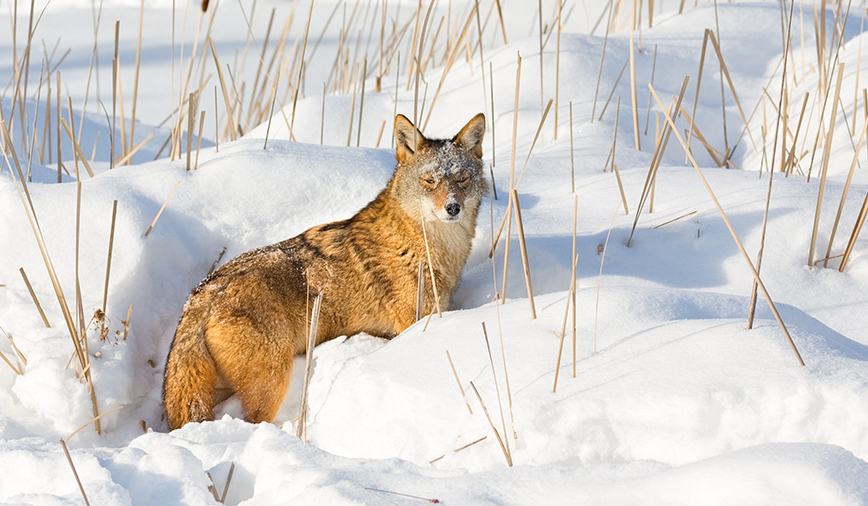Can you say subnivian?
Granted, it’s not the sort of word you’ll use every day. Or even every week. But it does happen to be a particularly appropriate topic here and now, given the sort of winter we’ve endured.
Subnivian means “beneath the snow” and refers to the space that forms between the snow and the ground on which it fell. Soil, even in winter, retains a small amount of heat; this heat in turn melts a small amount of snow and creates a layer of open space. This layer, known as the subnivian zone, can measure anywhere from a fraction of an inch to more than an inch in depth. And, let me tell you, it is one busy place!
While we go about our human business topside, shoveling, walking and driving our way through the endless white stuff, the subnivian set is hard at work too, throwing themselves into the vital business of survival. Deer mice and meadow voles scuttle about, no jackets, scarves or snow boots needed, munching on seeds and other plant material, as well as dormant insects. Short-tailed shrews aren’t far behind, feasting on those same insects and other invertebrates, and perhaps an occasional vole.
Protected from wind and other prevailing weather conditions, inhabitants of the subnivian zone are surrounded by relatively stable temperatures of about 32F—a figure that sounds positively balmy to those of us who have faced the recent 10-above temps with 10-below wind chills. But don’t make the mistake of thinking the subnivian zone is cozy and safe.
Besides those voracious shrews, other predators frequently make their way into subnivia. Coyotes, foxes, hawks and owls—even domestic dogs and cats—use their heightened sense of hearing to detect the activity below, and use teeth, beaks and claws to plunge down and capture various furry, nutritious morsels. Minks and weasels also drop in, snaking their sinuous bodies through networks of tunnels to find their mouse and vole prey.
During winters like this one, these dramas play out daily, and nightly, in snow-covered fields, woods and lawns throughout the TriCities. Maybe you’ve even seen the proof. A few times over the past couple of months, in between snowfalls, we’ve had brief warm spells that would reduce the snow cover considerably. As the white blanket melted away, small, winding tunnels would come into view. These highways and byways provide clear evidence of the goings-on in our very own “land down under.”
The next time you’re tempted to utter a discouraging word about this year’s snow, think twice. Maybe instead of those same, tired terms some consider coarse and offensive, you could try something different. Can you say subnivian?
If you’re truly tired of the snow and cold and would like to think about warmer days to come, you might want to check out Hummingbird Acrobats, a program that will run tonight from 7-9 p.m. at the Pottawatomie Community Center in St. Charles. Expert birder Denis Kania will present a worldwide view of this diverse group of birds, their ecology and behavior. Fee is $6 for St. Charles residents, $8 for nonresidents.
Pam Otto works for the St. Charles Park District and can be reached at potto@stcparks.org or 630-513-4346. For information about how to register for Hummingbird Acrobats or any other St. Charles Park District program, please call 630-513-6200.

